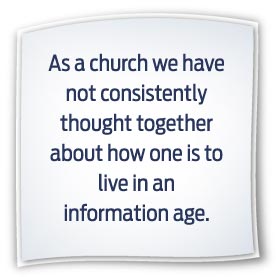
As a church we have maintained a strong stand against going to the movie theater (or cinema, as it is called in some places). Note the concerns expressed in the seventeenth edition of the Church Manual, published in 2005: “We earnestly warn against the subtle and sinister influence of the moving-picture theater, which is no place for the Christian. Dramatized films that graphically present by portrayal and by suggestion the sins and crimes of humanity—murder, adultery, robbery, and kindred evils—are in no small degree responsible for the present breakdown of morality” (p. 179).
“True—too true,” would the owl Glimfeather of Narnia fame say. We all have seen the graphic portrayal of sin and crime on TV—and muck always seems to stick and stink, even if it appears in fancy apparel.
 However, as I am raising a teenager of 14 years (and a second one who is already in the starting block to adolescence), I increasingly wonder about the adequacy of our stance toward media. True, the latest edition of the Church Manual (published in 2010) includes a significantly rewritten section on modern media (instead of only radio and television). But its passing reference to radio, television, and the Internet is hardly enough. As a church we surely need a more comprehensive vision of how we should deal with any media, including current social media and media we cannot even imagine right now.
However, as I am raising a teenager of 14 years (and a second one who is already in the starting block to adolescence), I increasingly wonder about the adequacy of our stance toward media. True, the latest edition of the Church Manual (published in 2010) includes a significantly rewritten section on modern media (instead of only radio and television). But its passing reference to radio, television, and the Internet is hardly enough. As a church we surely need a more comprehensive vision of how we should deal with any media, including current social media and media we cannot even imagine right now.
Ellen White’s references to the theater obviously refer to types of entertainment that were rather different from the high-tech media palaces we find in malls and cities around the world today. I was intrigued by her counsel regarding the inappropriateness of “worldly or theatrical entertainments” in our medical establishments because they would result in excitement and an insatiable desire for something new instead of focusing upon rest and repose.1 In an article entitled “Our Late Experience”2 she shares some of the highlights and challenges of the White household during the year 1866. Child-raising then appears to have also been attended by many challenges—including the theater. Her reasoning against theatergoing goes like this: people get used to the excitement of theaters and live performances, which in turn introduce them to other more evil forms of excitement (gambling, sexual allures, etc.), which in turn numb their minds to the convicting and transforming influence of God’s Spirit.
Spiff up the wording and jargon, and this would be a good piece about Internet addiction—the desire for a constant flow of new, newer, and ever more stimulating information. News junkies, we call them—and news could be replaced with many other nouns here. The point I am trying to make is this: while we as a church are cognizant of the dangers of explicit sex and violence and grunge and muck in movies and on the Internet, we have not consistently thought together about how one is to live in an information age.
As my wife and I manage MP3 players, smartphones, Internet access, TV watching (we don’t have one at home, but then, one doesn’t need a TV to watch TV), access to DVDs, Facebook, and other technological paraphernalia of the twenty-first century, I would wish for more consistent thinking together, as a church, about these issues. How then shall we live in view of the media onslaught?3
This is not only an editorial about raising children. It’s a call to think biblically about eternal principles instead of focusing upon specific media. It’s a plea to huddle together and think scripturally and consistently about all types of media and media content. If we fail to do so, we may not only face the potential loss of a new media-savvy generation of Adventists—we may ourselves get lost in digital nirvana.
________
1 Recreation (1912), p. 35.
2 “Our Late Experience,” Adventist Review and Sabbath Herald, Feb. 20, 1866.
3 Jean Boonstra, “Talking About Social Media,” Adventist Review, Oct. 27, 2011, pp. 24, 25, represents the kind of thinking we need to do as a community of faith.
_____________
Gerald Klingbeil is an associate editor of the Adventist Review. This article was published May 17, 2012.